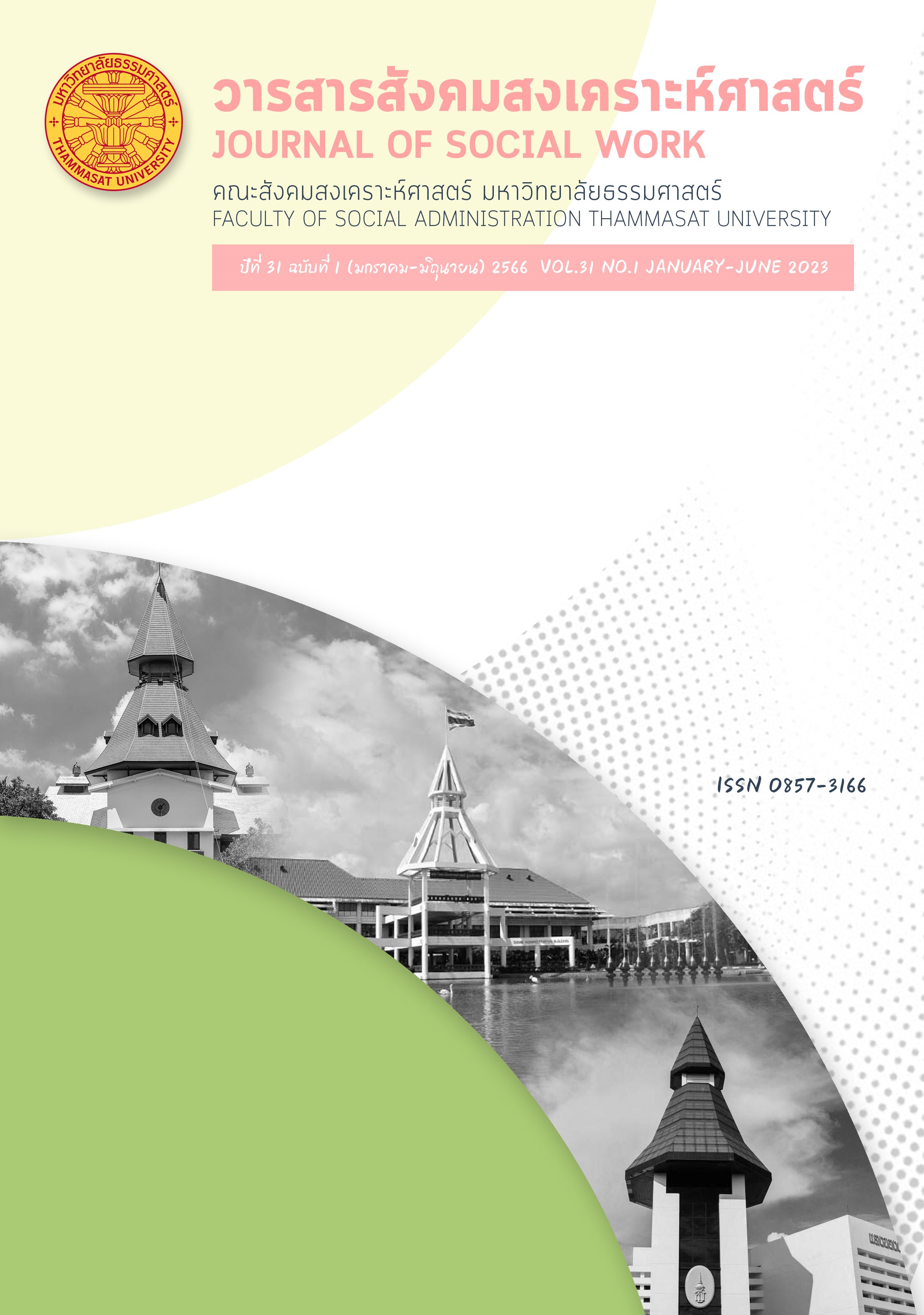Violence in Thailand
Keywords:
Violence, Aggression, CrimeAbstract
The article “Violence in Thailand” aims to study the causes, symptoms, and effects of the use of different forms of violence in Thailand. It aims to propose possible preventive measures as well as solutions to these identified problems. The methodology of this research is based on a mixed methods approach, consisting of a survey of 2,200 sample people and 400 inmates together with qualitative research involving in-depth interviews with 8 inmates and victims of violence and 10 representatives from agencies that display best practices in the prevention and solution of violence.
The research found that the most significant forms of violence in Thai society include suicide, domestic violence, violence against children, women, and elders, violence from criminal acts, violence involving firearms, violence committed by juveniles, and violence related to terrorism. The causes of violence in Thai society include issues related to broken families, the portrayal of violence by the media, the prevalence of alcohol, drugs, and firearms, economic problems, and the acceptance of the use of violence as a norm. This research provides important recommendations as follows: values and cultures that encourage violence should be addressed and challenged; prevention measures for domestic violence against children and women must be in place; alcohol consumption, drug abuse and the use of firearms must be strictly regulated; and lastly, religious values should be encouraged as the main guidelines for leading one’s life.
References
กรมกิจการผู้สูงอายุ. (2561). ผส. จัดประชุมเข้ม “สังคมไทย ไร้ความรุนแรงต่อผู้สูงอายุ” หวั่นคนไทยไม่ตระหนักถึงความสำคัญของผู้สูงอายุ. สืบค้นจาก http://www.dop.go.th/th/gallery/1/1801
กรมกิจการผู้สูงอายุ. (2561). สิทธิของผู้สูงอายไทยในสังคมผู้สูงอายุอย่างสมบูรณ์. กรุงเทพฯ: กลุ่มสื่อสารองค์กร สำนักงานเลขานุการกรม. สืบค้นจาก http://www.dop.go.th/th/gallery/1/1510
กรมสุขภาพจิต. (2561). รายงานอัตราฆ่าตัวตายที่มากที่สุดในประเทศไทยต่อประชากรแสนคนแยกตามจังหวัด ประจำปี พ.ศ. 2560. สืบค้นจาก https://dmh.go.th/report/suicide/
กรุงเทพธุรกิจ. (2563). บูลลี่เด็กไทยติดอันดับ 2 ของโลก. สืบค้นจาก https://www.bangkokbiznews.com/social/861433
ไทยรัฐออนไลน์. (2564). กะเทาะปัญหาอาชญากรรม ปี 64 พุ่งไม่หยุด ภัยสังคมซ้ำเติมประชาชนห้วงโควิด. สืบค้นจาก https://www.thairath.co.th/scoop/theissue/2262011
ประชาชาติธุรกิจ. (2564, เมษายน 26). จะทำอย่างไร เมื่อความรุนแรงไม่ใช่เรื่องไกลตัว และบ้านไม่ใช่ Safe Zone ของทุกคน. สืบค้นจาก https://www.prachachat.net/d-life/news-653845
พรชัย ขันตี, ธัชชัย ปิตะนีละบุตร และอัศวิน วัฒนวิบูลย์. (2543). ทฤษฎี และงานวิจัยทางอาชญาวิทยา. กรุงเทพฯ: บุ๊คเน็ท.
โพสต์ทูเดย์. (2561). เผยเด็กไทยถูกรังแกเป็นอันดับสองของโลก. สืบค้นจาก https://www.posttoday.com/hits/567280
สุมนทิพย์ จิตสว่าง และฐิติยา เพชรมุนี. (2563). รายงานวิจัยการสร้างสังคมไทยไร้ความรุนแรง. กรุงเทพ: สำนักงานการวิจัยแห่งชาติ (วช).
Alpers, P. & Michael. P. (2022). Guns in Thailand: Firearms Surrendered and Seized. Sydney School of Public Health: The University of Sydney. Retrieved from www.gunpolicy.org/firearms/compareyears/183/firearms_collected_and_seized
Claire, MC. E. & Hideg, G. (2017). Global Violent Deaths 2017: Time to Decide. Geneva: Small Arms Survey, Graduate Institute of International and Development Studies. eds. (2002). World Report on Violence and Health. Geneva: World Health Organization.
Global Terrorism Index. (2022). Global Terrorism Index report Available https://reliefweb.int/report/world/global-terrorism-index-2022
Institute for Economics & Peace. (2015). Global Terrorism Index 2015. Sydney: The Institute for Economic & Peace. Retrieved from https://privacyinternational.org/sites/default/files/2018-02/Global%20Terrorism%20Index%202015%2C%20Institute%20for%20Economics%20%26%20Peace.pdf
Institute for Economics & Peace. (2019a). Global Peace Index 2019: Measuring Peace in a Complex World. Sydney: The Institute for Economic & Peace. Retrieved from https://www.visionofhumanity.org/wp-content/uploads/2020/10/GPI-2019web.pdf
Institute for Economics & Peace. (2019b). Global Terrorism Index 2019: Measuring the Impact of Terrorism. Sydney: The Institute for Economic & Peace. Retrieved from https://www.economicsandpeace.org/wp-content/uploads/2020/08/GTI-2019web.pdf
Krug, E. G., Linda, L. D., James, A. M., Anthony, B. Z., & Rafael, L. (2002). World Report on Violence and Health. Geneva: World Health Organization.
Naghavi, M., Murray, Christopher J.L., & Vos, T. (2018). Global Mortality from Firearms, 1990-2016. JAMA. 320(8), 792-814. Retrieved from www.researchgate.net/publication/327433707_Global_Mortality_From_Firearms_1990-2016
Nation Master. (1999). Crime > Murders Committed by Youths: Countries Compared. Retrieved from https://www.nationmaster.com/country-info/stats/Crime/Murders-committed-by-youths
Stalker, P. (2017). Ending Violence in Childhood: Global Report 2017. New Delhi: Know Violence in Childhood. Retrieved from https://resourcecentre.savethe children.net /node/12380/ pdf/global_report_2017_ending_violence_in_childhood.pdf
United Nations Children’s Fund (UNICEF). (2017). A Familiar Face: Violence in the Lives of Children and Adolescents. New York, NY: Division of Data, Research and Policy, United Nations Children’s Fund (UNICEF). Retrieved from https://data.unicef.org/ resources/a-familiar-face/
United Nations. (2018). World Elder Abuse Awareness Day. Retrieved from https://www.un.org/en/observances/elder-abuse-awareness-day.
United Nations Office on Drugs and Crime (UNODC). (2019). Global Study for Homicide 2019. (Vienna, 2019). Retrieved from https://www.unodc.org/documents/data-and-analysis/gsh/Booklet1.pdf.
World Health Organization and World Health Statistics. (2019). Suicide Rate by Country 2022. Retrieved from https://worldpopulationreview.com/country-rankings/suicide-rate-by-country
Worldpopulationreview.com. (2022). Gun Deaths by Country 2022. https://worldpopulationreview.com/country-rankings/gun-deaths-by-country
Downloads
Published
How to Cite
Issue
Section
License
Copyright (c) 2023 Journal of Social Work

This work is licensed under a Creative Commons Attribution-NonCommercial-NoDerivatives 4.0 International License.
The manuscripts published in the Social Work Journal is the copyright of the Social Work Journal, Thammasat University
Any article or opinion appeared in the Social Work Journal will solely be under the responsibility of the author The Faculty of Social Administration, Thammasat University and the editors do not need to reach in agreement or hold any responsibility.



